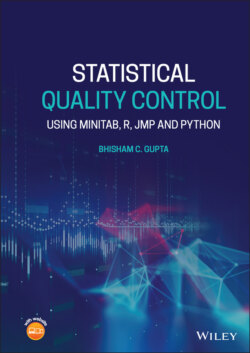Читать книгу Statistical Quality Control - Bhisham C. Gupta - Страница 46
2.2.3 Six Sigma as a Statistical Standard of Quality
ОглавлениеThe third definition of Six Sigma refers to a level of quality that produces very few defects in the long term. With this definition, Six Sigma is often written using the numeral 6 and the Greek letter sigma: 6σ.
Bill Smith devised this standard of quality at Motorola in 1986. According to Smith’s definition, over the long run, a process running at a 6σ level will produce 3.4 defects per million opportunities (DPMO). To achieve this extremely high level of quality, a process must produce outputs that consistently meet the target specifications. Producing outputs with very small variability around the target is the key to achieving Six Sigma quality. With such tight control over variability, even if the process drifts from the target over time, the output will still meet specifications and achieve the 3.4 DPMO standard.
Figure 2.4 The standard normal distribution curve.
As might be expected given this extremely high standard for quality, most processes are not running at a 6σ quality level. In fact, in most organizations, processes are running at the 3σ level, which translates into about 67,000 DPMO.
